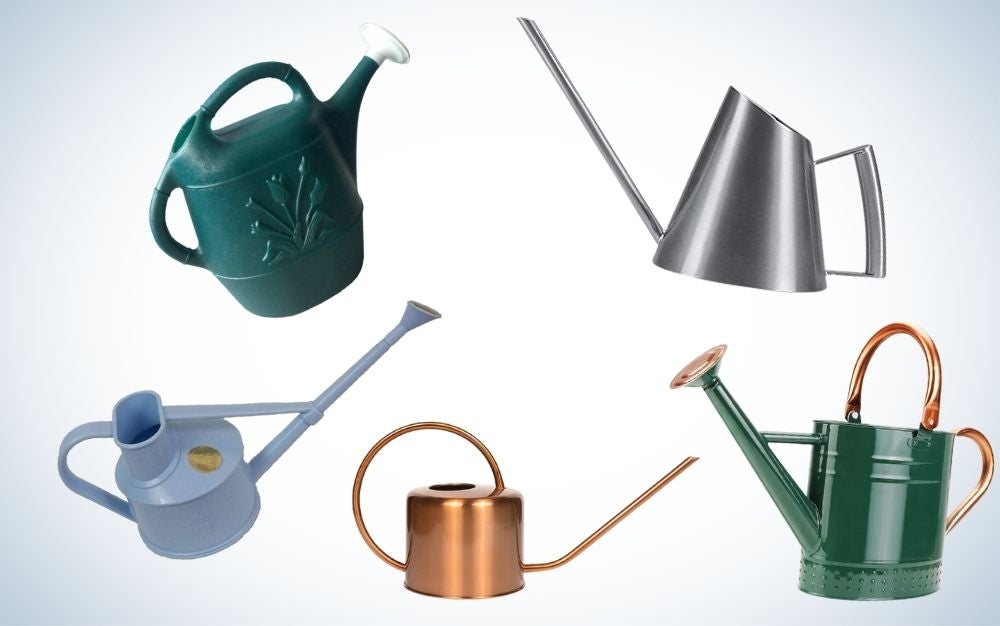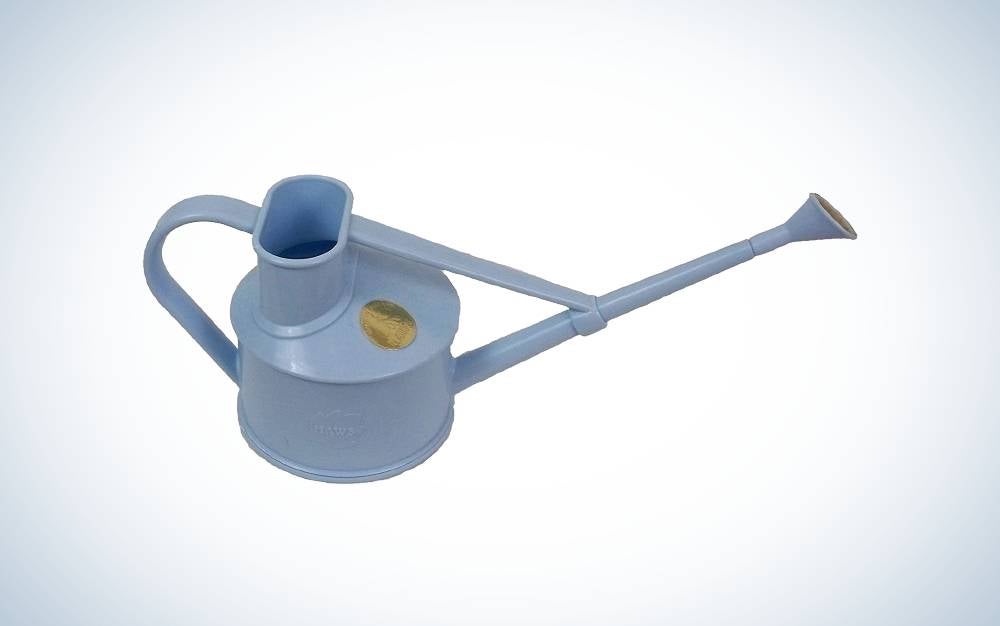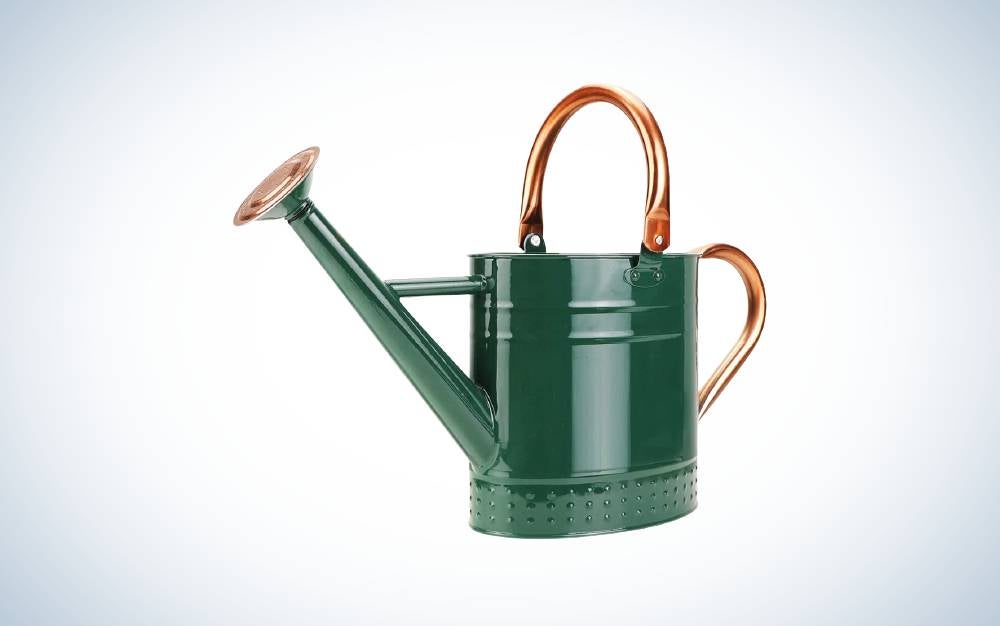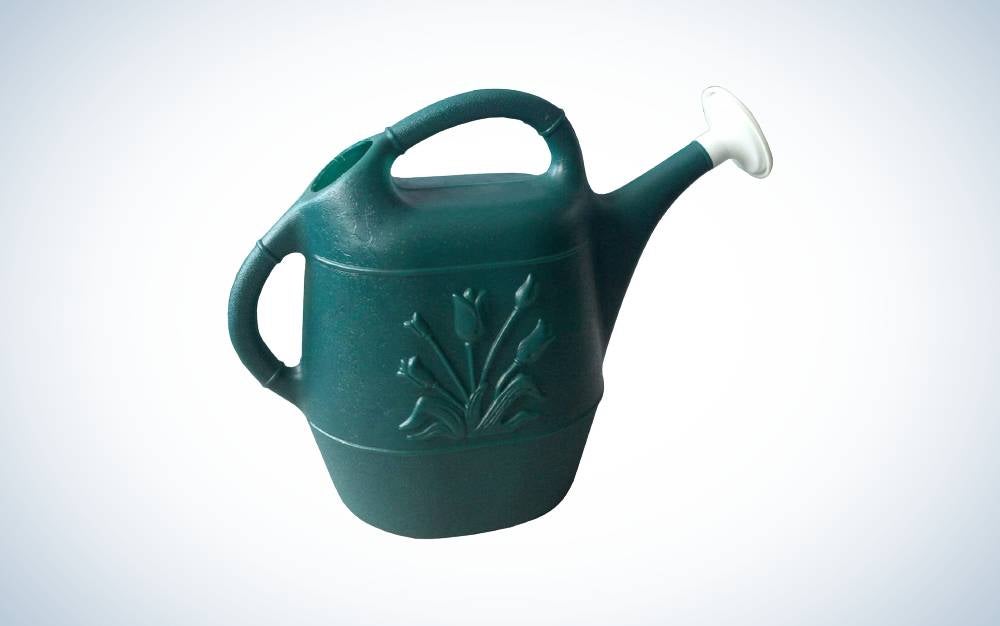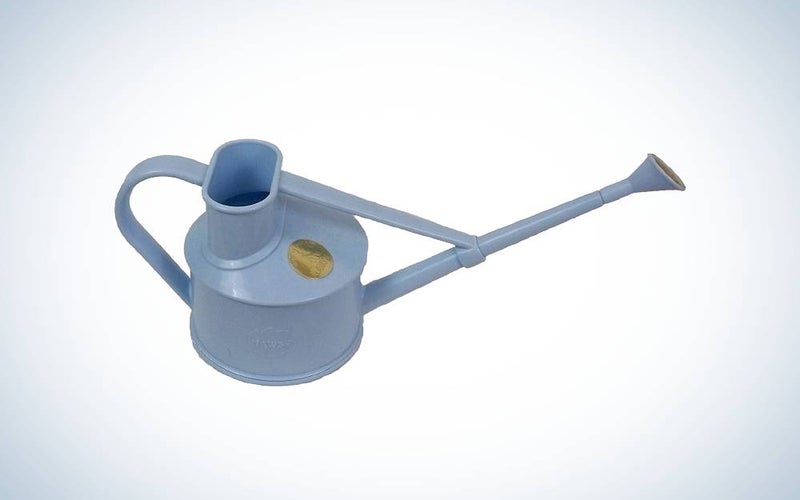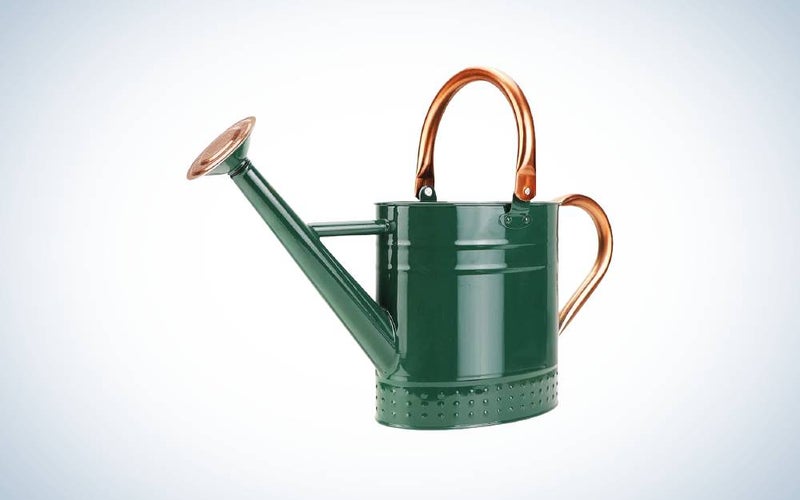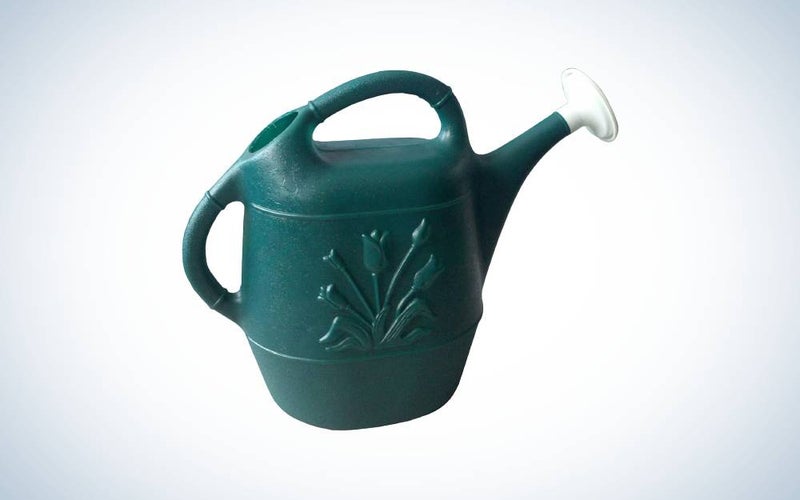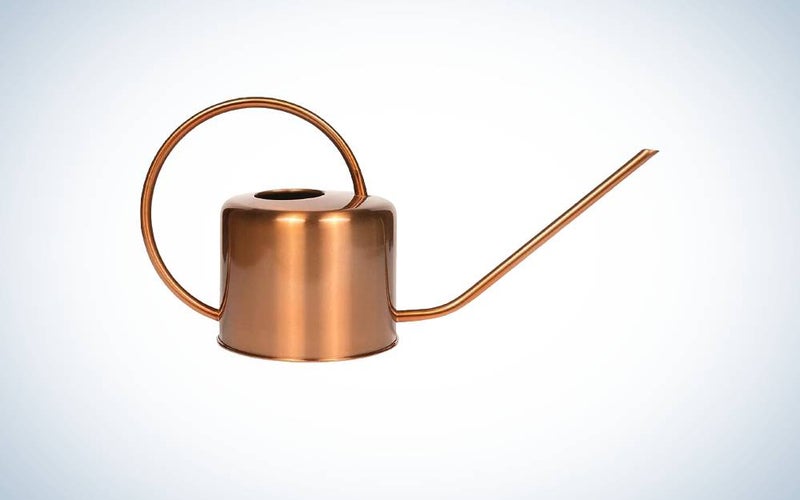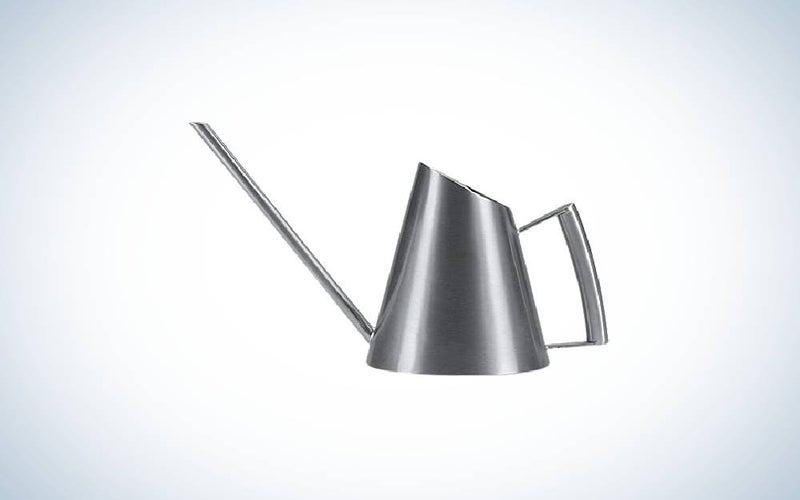We may earn revenue from the products available on this page and participate in affiliate programs. Learn more ›
Plants make great roommates. They won’t eat drink all the seltzers you have in the fridge and they never make noise when you’re trying to watch your favorite twee baking competition show. Our flora friends do require some upkeep, though, and that means regular watering. Dishing out water can feel like a chore, but with the best watering cans, it can actually turn into an enjoyable experience. The trick is choosing the right can. Pick something too fancy and impractical and you’ll end up watering your feet more than your plants. Choose a can that’s too big and you’ll have trouble dishing out precious hydration with any real accuracy. Every plant collection is different, which means your can needs are specific to you.
Rather than slogging through a long process of trial and error, these targeted choices will help you get the right can to keep your leafy menagerie thriving all year long.
Methodology
To create this list, we scoured the internet and drew on real world experience to find watering cans that would meet specific needs. I have been gardening seriously for nearly two decades and have kept just about every type of plant my home and garden can accommodate. I have spilled plenty of water during that time, which has provided the best lessons. We also drew on professional advice available on the web regarding specific care and needs for various types of plants.
We focused on value, utility, and durability. Style is obviously a consideration, but it was secondary in the selection process.
- Best indoor: Haws Handy Indoor Plastic Watering Can
- Best outdoor: Megawodar 1 Gallon Galvanized Steel Watering Can
- Best for gardens: Cado 63065 2Gal Watering Can
- Best for hanging baskets: Homarden 40 oz. Copper Colored Watering Can
- Best for succulents: Fasmov 13.5 Oz Stainless Steel Watering Can
Best indoor watering can: Haws Handy Indoor Plastic Watering Can
Why it made the cut: Lightweight and compact, this basic can has a precision nozzle capable of watering delicate plants with lots of foliage.
Specs:
- Material: Plastic
- Capacity: 24 ounces
- Dimensions: 14 x 4.5 x 5 inches
Pros:
- Lightweight
- Precision nozzle
- Lots of color options
Cons:
- Plasticy
The design on this best indoor watering can may look familiar. The company has made a metal outdoor version for decades. This Haws Handy design is built for balance, so when it’s filled with up to 24 ounces of water, it’s easy to handle. When things get out of balance, it’s easy to spill your water or dump too much into the plant, which can cause a mess and harm your plants.
The spout is removable, so you can add it when you want precision. Some plants, like African violets don’t want their leaves to get wet during the watering process, which makes the long nozzle attractive. Ferns, on the other hand, want wet leaves so you can ditch the spout and give the whole plant a good soak.
Because of its relatively small capacity, it’s great for small plant collections or even for kids to use since it won’t get overly heavy, even when it’s all the way full. The oval-shaped opening on the top makes it simple to fill, while a tall flange keeps water from spilling out of the top, even when you’re walking with it filled to the brim. If you have a veritable indoor jungle of plants, you might want to go with something with more capacity for fewer trips back to the sink.
Best outdoor watering can: Megawodar 1 Gallon Galvanized Steel Watering Can
Why it made the cut: Steel construction will protect it from the sun and other hazards that come with the outdoor life.
Specs:
- Material: Galvanized steel
- Capacity: 1 gallon
- Dimensions: 15.98 x 9.8 x 6.85 inches
Pros:
- Sturdy metal construction
- Removable spout
- Two handles
Cons:
- Can splash out of large top opening
- One color option
For the best outdoor watering can, you want more capacity and this classic can accommodates up to a gallon at a time. That much water can get heavy as you move around the yard, so the Megawodar offers a pair of handles to make it easier to tote.
The sturdy steel construction has an electrostatic spray coating on its exterior that will resist wear from the sun and other outdoor elements. For typical watering, you can leave the spout in place and shower water from the holes to simulate rainfall. If you need more precision, simply pull out the spout and pour a steady stream of water exactly where you want it.
Because it’s galvanized, the can should resist rust, even if you manage to damage the exterior coating by banging it against the ground or a rock. Treat it right and this can could last until that sapling you planted this year turns into a giant tree that shades your entire yard.
Best watering can for gardens: Cado 63065 2Gal Watering Can
Why it made the cut: If you’re trying to water a big garden, the two-gallon capacity will greatly reduce trips back to the tap.
Specs:
- Material: Plastic
- Capacity: 2 gallons
- Dimensions: 17″L x 7.25″W x 13″H
Pros:
- Large water tank
- Chunky handles
- Large nozzle
Cons:
- Plastic
- Heavy when full
This best watering can for gardens features full two gallons of capacity, this Cado watering can will let you cover a ton of territory with water before you have to head back to the tap. Simply stick the hose in the hole on the top and fill it. A pair of burly handles make it relatively easy to carry and control as you dispense the water. With two gallons inside, the whole thing will weigh nearly 17 pounds, which doesn’t sound like much now, but that’s a real forearm workout when you’re carrying it around the yard.
The large spout has an array of holes that simulates gentle rainfall as you pour the water. It’s not particularly precise, but this is primarily meant for outdoor plants, which typically get their hydration from rainfall, so it shouldn’t be an issue.
It is made of plastic, but that means it can survive bumps without enduring dents. The plastic material is UV resistant, so it won’t dry up and crack unless you leave it in the sun for an irresponsible amount of time.
Best watering can for hanging baskets: Homarden 40 oz. Copper Colored Watering Can
Why it made the cut: You want a light can without much potential for spillage when going over your head. This can fits the bill perfectly.
Specs:
- Material: Copper
- Capacity: 40 ounces
- Dimensions: 15 x 5 x 8 inches
Pros:
- Beautiful copper construction
- Precise hole prevents spills
- Long spout for reach
Cons:
- No detachable nozzle
- Handle looks nice, but is thin
Reaching up over your head with a watering can isn’t always fun. This best watering can for hanging baskets, the Homarden holds 40 ounces of water, which won’t tax your deltoid muscles as you try to reach up to a hanging basket. Because it’s meant for this much water, it’s easier to pour than if simply don’t fill a bigger can all the way.
The copper exterior will only get more attractive as it ages. It’s also durable so you can use it indoors and outside. The handle is on the thin side, but it also has a large radius, so you can hold it at a variety of angles, which makes for easier water dispensing.
The precisely cut hole in the top of the can is easily big enough to fill with a garden hose or in the sink, but it’s small enough and located in such a spot that it won’t splash water onto your head as you reach up to water those geraniums or other hanging baskets.
Best watering can for succulents: Fasmov 13.5 Oz Stainless Steel Watering Can
Why it made the cut: The extra-long beak has its opening on the top for maximum water control.
Specs:
- Material: Stainless steel
- Capacity: 13.5 ounces
- Dimensions: 9.49 x 5.83 x 4.29 inches
Pros:
- Precision spout
- Beautiful
- Solid handle
Cons:
- Small capacity
You’ll need the best watering can for succulents to water them around the base, which makes the precision that comes from this Fasmov stainless steel watering can essential. The extra-long six-inch beak has its opening facing upward, which allows for extreme precision when pouring. You can fully avoid accidental pours, which can have a detrimental effect on water-efficient succulents.
Despite its relatively small capacity, this attractive model still offers a chunky, easy-to-grip handle, which further adds to its accuracy. It’s not meant for outdoor plants and it doesn’t have any nozzle attachments, but that shouldn’t matter too much since it’s only meant for indoor use.
Because it’s made of brushed steel and offers a super modern design, you don’t have to hide it under the sink when it’s not in use like you do that old can you bought at an estate sale with a big ugly daisy printed on it.
Things to consider before buying a watering can
If you consider some simple variables before making a purchase, you can maximize your value and avoid getting wet while you give your plants a drink.
Capacity
This is a big one. You obviously don’t want to make a ton of trips to the sink or hose during the process. At the same time, you also don’t want to have to sign up for a Crossfit gym just to have the muscles necessary to lug a full two-gallon can around your entire yard. Most cans fit in between the 24-ounce and two-gallon marks. If you’re watering indoor plants, something in the half-gallon range should probably be fine. If you have bigger, thirstier plants, maybe step up to a gallon.
If you buy a can that’s too heavy to handle, it will be difficult to accurately control how much water you pour, which is bad news.
Material
While metal cans will often last a long time, they can have drawbacks. Some have enamel coatings that can get damaged and let the material underneath rust. They also dent, which can affect capacity and lead to cracks down the road. Plastic cans typically don’t last as long, but they’re often lighter and easier to handle for indoor purposes.
Handle
It’s hard to know exactly how good a watering can’s handle is without touching it, but there are some things to look for. A handle that’s too thin will fatigue your hand quickly and give you less control. A chunkier handle will be easier to hold onto and give you more precision. A big handle can let you water comfortably at more angles, while a shorter handle may not be so flexible.
Spout type
A long spout with a smaller opening is good for precision, but will take forever for bigger plants. Some cans come with built-in nozzles that spread the water out to simulate rain, which is good for outdoor plants and some ferns, but bad for others. Removable nozzles can be handy, but if you only plan to use the can in one way, it’s just another part to lose or break.
FAQs
Q: Are metal or plastic watering cans better?
Plastic cans are cheaper, lighter, and often fairly durable, especially if you hit them agains the ground or other objects in the garden. They won’t dent or rust. They may, however, crack. Metal cans can last for decades if you don’t mind them looking a bit banged up. It’s really about personal preference.
Q: How do you take care of a watering can?
You want to store your can without any water in it and out of sunlight that can degrade the material over time. The sunlight rule is especially important for plastic cans because the UV light will do damage over a shorter period of time.
If you notice algae or smells popping up, a gentle wash with soap can help remedy it, but make sure to get rid of all soap residue so it doesn’t end up in your plants’ soil.
Q: What is the largest watering can?
If you want the actual largest watering can in the world, you can go check it out at the Utica Zoo in upstate, NY. It’s made of galvanized steel, weighs 2,000 pounds, stands more than 15-feet tall, and has an overall volume of 1,753 cubic feet. For our purposes, however, you probably don’t need to go over two gallons.
A final thought about the best watering cans
Your plants need regular watering and that process can be enjoyable for both of you with the right vessel. The best watering cans hold just the right amount of water, make watering comfortable, and look good enough that you don’t need to hide them when they’re not in use.
